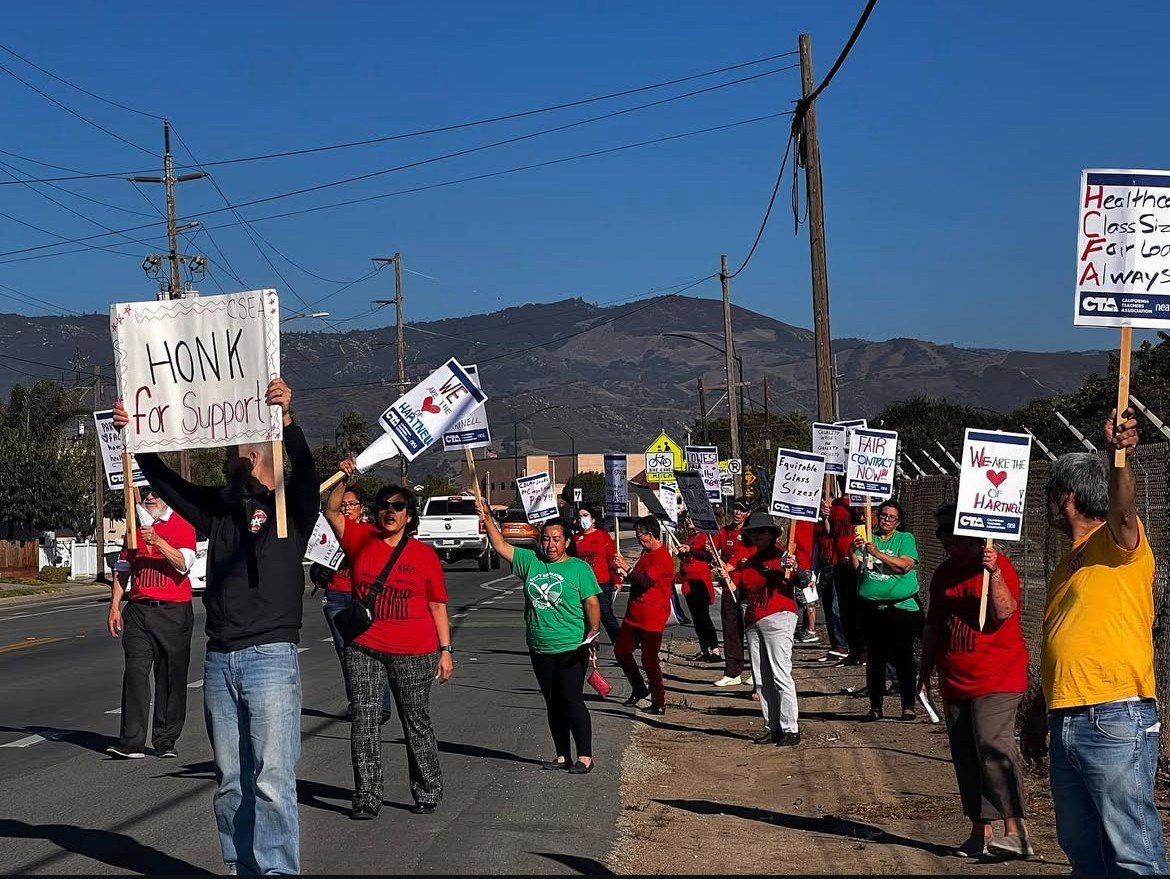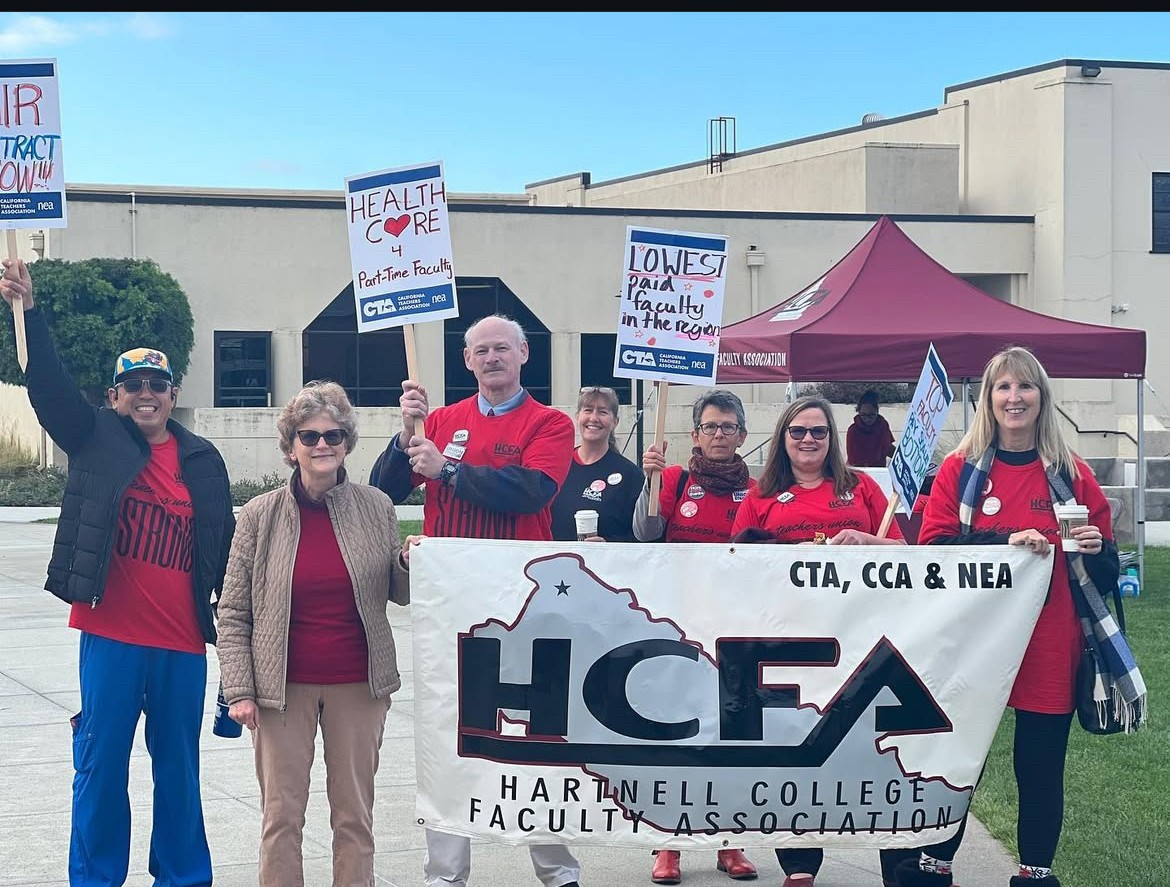How and why CCA chapters are putting the pressure on districts to ensure healthcare is accessible to all of our members

Amidst an environment of looming threats to public services and rising healthcare costs, CCA chapters have been working hard towards healthcare equity for all CCA faculty and staff. Fighting against increases to premiums or out of pocket expenses can be part of every bargain, and protecting our members against these concessions is crucial.
But many of our part-time members don’t have access to affordable healthcare. Since 2023, the state of California has implemented a program that reimburses community college districts for part-time faculty healthcare coverage. This is a lifeline for our colleagues, many of whom go without health insurance entirely or who are paying up to $20,000 a year in health care premiums on the open market.
Local chapters who move their districts to participate in the reimbursement program are working to unite their part-time and full time faculty in the larger fight for healthcare, as a system that allows for some to go without affordable healthcare opens the door to the erosion of affordable healthcare for all.
AB 190 Funds Part-Time Healthcare–and Provides Opportunities for Local Chapters to Bargain Real Healthcare Equity.

In 2023, the state of California put AB 190 into action, setting aside funds that would be solely used to reimburse community colleges for up to 100% of the costs of part-time health care. Districts who provide part-time faculty without access to healthcare elsewhere and who teach a minimum of 40% of a full time load across one or many districts are eligible.
Full time STEM faculty and union president, Rushia Turner, says hearing about a part-time colleague who was spending over $20,000 a year for his family’s healthcare was all she needed to spring into action.
“Why wouldn’t we make it part of our bargaining demands that they participate in this program,” Turner said,
“if I know just anecdotally that it will help just one person, that means it will definitely change many other people’s lives. This win means our colleague can save for retirement–a massive change for him and his family.”
Turner is president of the faculty association at Monterey Peninsula Community College, and her leadership team took advantage of the district’s desire to make big changes to their healthcare. “They were desperate to get out of their self-funded plan,” she said. We definitely used that moment to make our demand not only for healthcare for part-timers, but also for a three year moratorium on premium increases for all of our faculty.”
Monterey Peninsula College TA strengthened their union during the process, increasing membership and transparency during the bargaining process. They also won 15% raises over the span of the 3 year contract.
EDUCATE. AGITATE. ORGANIZE!
Nancy Shur-Beymer is a full-time nursing faculty member and the president of Hartnell College Faculty Association. Her union team saw the importance of their district’s participation in the program and worked to educate their full-time faculty about the needs of part time faculty. Over 7 months, her organizing team had one-on-one conversations with all faculty, in person and on phone banks, to educate them about how the program would meet the needs of their part-time faculty without health insurance. The results paid off, as 80% of their full time faculty indicated on a survey that they would not ratify a contract that did not contain part-time healthcare.
When the District and HCFA were not able to come to agreement and started the impasse process, the survey data was crucial, as well as informational pickets and continued solidarity among the faculty. The parties came to agreement in mediation–with part-time healthcare coverage in the contract, as well as salary increases that moved their district rating for average faculty salary from 62nd to 36th in the state.
“Don’t be afraid of the hard conversations,” Shur-Beymer says, “staying united takes work–but it’s what gets our members the win in the end.”
Don’t Believe the Hype
Geoff Johnson, CCA Part-Time At-Large Director for Southern California advises locals to not buy district excuses for not participating in a program that would reimburse them for healthcare costs for part-timers. “The money came from a 200 million-dollar statewide fund of which only 65 million was paid out in 2024-2025. Presently over 50% of adjuncts who teach a 40% load and over are eligible for the plan—there’s enough money to cover eligible adjuncts statewide, and the money’s not going away.”
TEACHER WELLNESS IS STUDENT WELLNESS.
River Navaille is part-time Theater Arts faculty at Hartnell, where their experience and expertise as a professional actor enhances their students’ experiences in the classroom.
Many part-time instructors are working in their field and benefitting students by also teaching classes at our community colleges. District participation in the part-time healthcare reimbursement program is an important way to attract and retain these crucial members.
Not all part-timers have professional jobs outside their jobs as part time faculty. As Navaille reminds us, “there is this assumption that part-time professors just want to be part-time when the reality is that the supply of tenure track jobs is so low–most part-timers would like to be full time, and are working full time or more across colleges. So in a way we are working full time for the California Community Colleges so it is a labor rights win for us to be provided health care.”
At Hartnell, Navaille says moving the district to participate in the reimbursement program took unity between the part-time and full time faculty. This unity was built with trust that was fostered by transparency and education.
“Being part-time doesn’t mean we are short term employees, and all institutions benefit from longevity–so this program benefits everyone. Full time faculty need to recognize that us getting a piece of the pie, doesn’t reduce their slice. We should be taking advantage of the funding to the fullest.”
The Discussion 0 comments Post a Comment